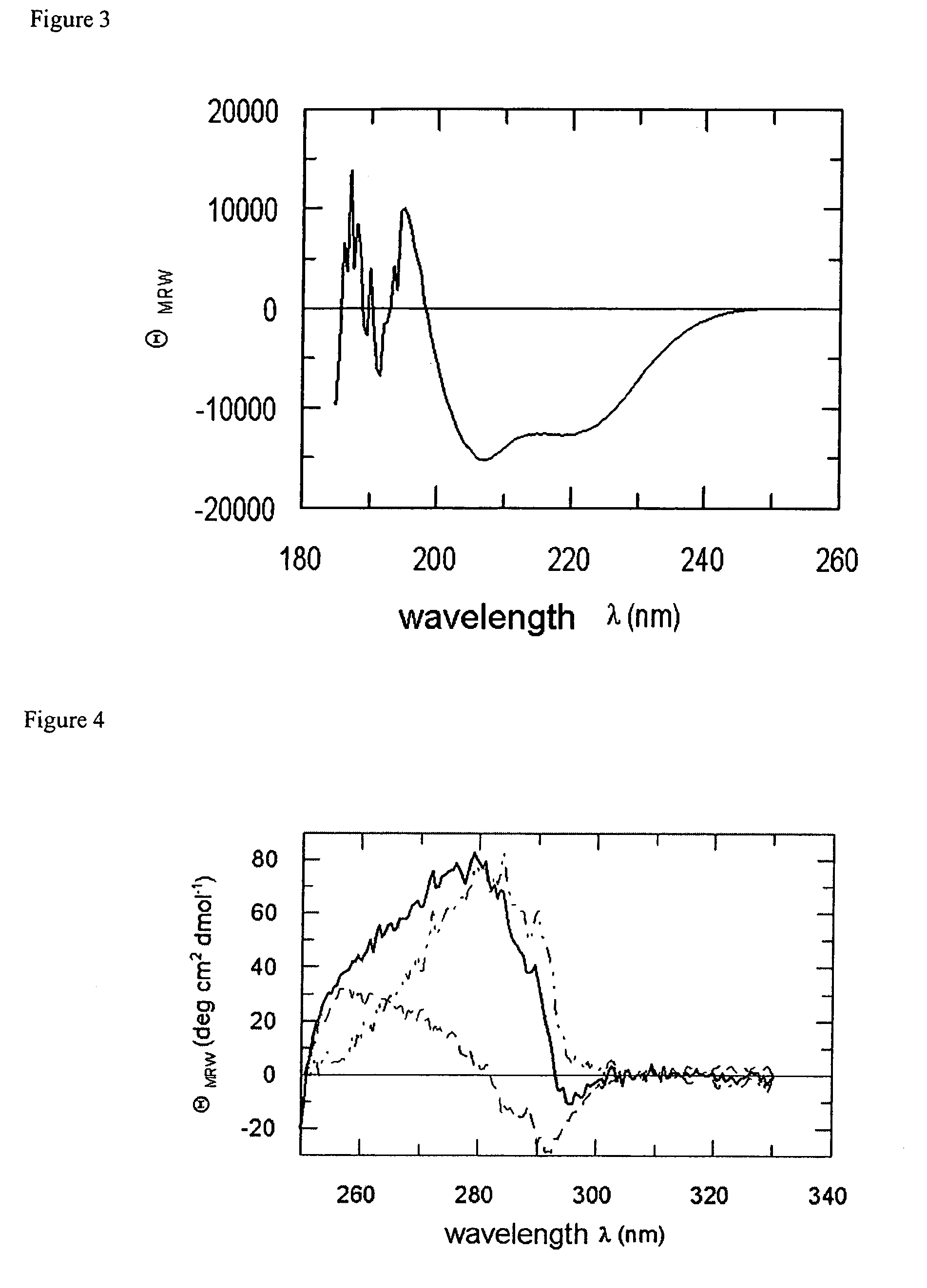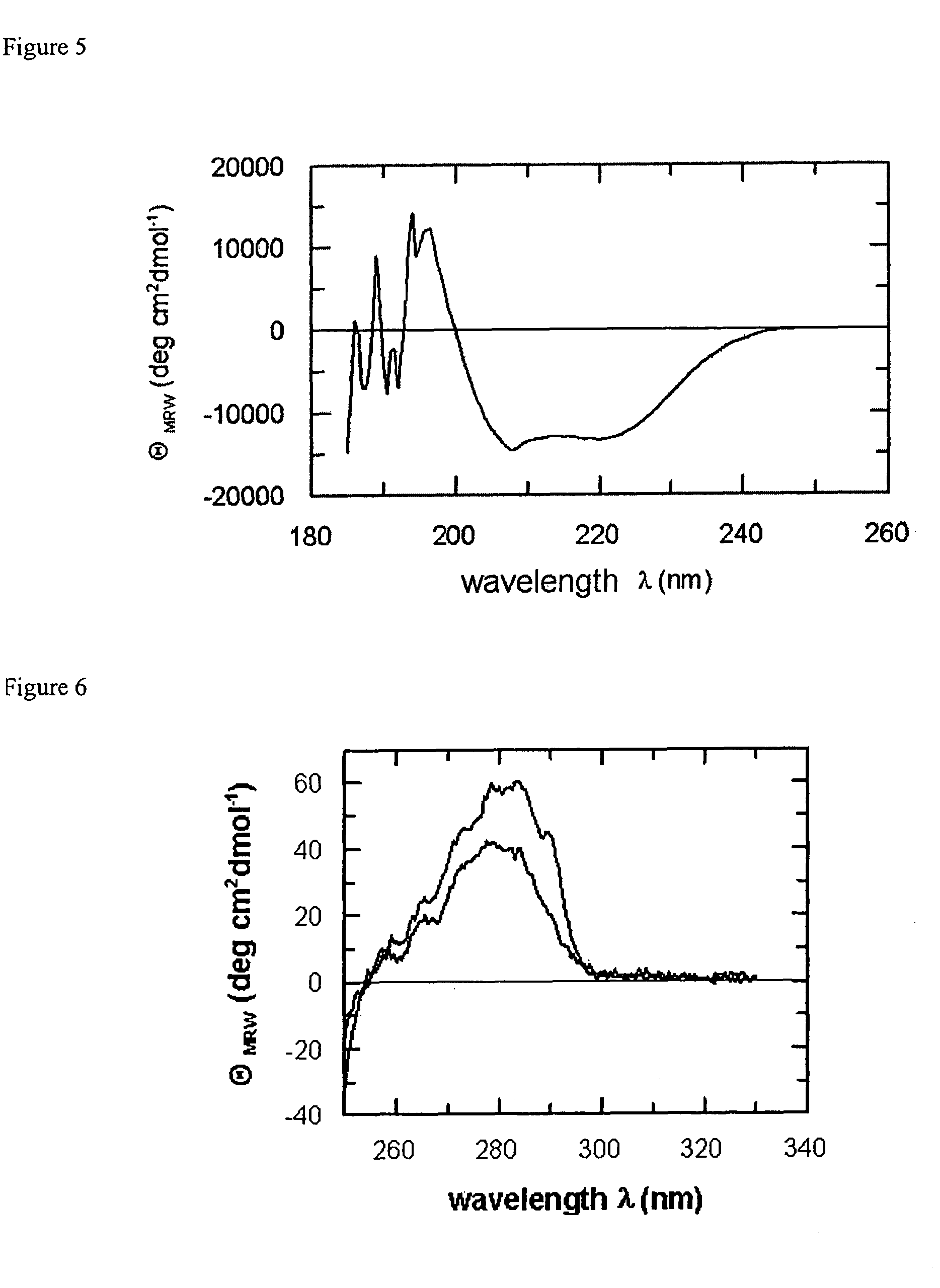Methods for producing fusion polypeptides or enhancing expression of fusion polypeptides
a technology of fusion polypeptides and polypeptides, which is applied in the direction of dna/rna fragmentation, viruses, fungi, etc., can solve the problems of improving the solubility of many different polypeptides, unable to fully express, and unable to achieve biological active forms
- Summary
- Abstract
- Description
- Claims
- Application Information
AI Technical Summary
Benefits of technology
Problems solved by technology
Method used
Image
Examples
example 1
Recombinant Production of HIV-1 gp41 using a FkpA-based Expression System
[0091]1.1 Construction of an Expression Plasmid Comprising FkpA and gp41
[0092]Wild-type FkpA was cloned, expressed and purified according to Bothmann and Plückthun, J Biol Chem 275 (2000) 17106-17113 with some minor modifications. For storage, the protein solution was dialyzed against 20 mM NaH2PO4 / NaOH (pH 6.0), 100 mM NaCl and concentrated to 26 mg / ml (1 mM).
[0093]For cytosolic expression, the FkpA-coding sequence of the above expression vector was modified to lack the sequence part coding for the signal peptide and to comprise instead only the coding region of mature FkpA.
[0094]In the first step, the restriction site BamHI in the coding region of the mature E. coli FkpA was deleted using the QuikChange site-directed mutagenesis kit of Stratagene (La Jolla, Calif.; USA) with the primers:
[0095]
5′ -gcgggtgttccgggtatcccaccgaattc-3′(SEQ ID NO:1)5′ -gaattcggtgggatacccggaacacccgc-3′(SEQ ID NO:2)
The construct was na...
example 2
Use of a SlyD-Based Expression Vector
[0116]The chaperone SlyD has been isolated by routine cloning procedures from E. coli. For recombinant expression, a DNA construct has been prepared coding for amino acids 1 to 165 of SlyD. An expression vector has been constructed comprising SlyD(1-165) as fusion partner and HIV-1 gp41 as target protein (cf: SEQ ID NO:6). The fusion protein was expressed and successfully purified as described for FkpA-gp41 above. Interestingly, we found that a native-like fusion polypeptide of the SlyD (1-165)-gp41 type can be obtained in a very convenient manner by dialysis of the chaotropic material (dissolved, e.g. in 7.0 M GuHCl) against 50 mM sodium phosphate pH 7.4, 150 mM NaCl at room temperature.
example 3
Purification of scFkpA and scSlyD
[0117]The single-chain PPIases scSlyD (SEQ ID NO:7) and scFkpA (SEQ ID NO:8), respectively, were obtained from an E. coli overproducer according to virtually the same purification protocol as described in Example 1. In short: the induced cells were harvested, washed in PBS and lysed in 50 mM sodium phosphate pH 7.8, 100 mM sodium chloride, 7.0 M GuHCl at room temperature. The unfolded target proteins were bound to a Ni-NTA-column via their C-terminal hexa-His-tag and were refolded in 50 mM sodium phosphate, pH 7.8, 100 mM sodium chloride. After this matrix-assisted refolding procedure, the proteins were eluted in an imidazole gradient and subjected to a gel filtration on a Superdex 200® column.
[0118]Alternatively, scSlyD and scFkpA may be dialysed after elution to remove residual concentrations of imidazole. Both proteins turn out to be highly soluble. ScSlyD, for example, does not tend to aggregate at concentrations up to 25 mg / ml. In order to eluci...
PUM
 Login to View More
Login to View More Abstract
Description
Claims
Application Information
 Login to View More
Login to View More - R&D
- Intellectual Property
- Life Sciences
- Materials
- Tech Scout
- Unparalleled Data Quality
- Higher Quality Content
- 60% Fewer Hallucinations
Browse by: Latest US Patents, China's latest patents, Technical Efficacy Thesaurus, Application Domain, Technology Topic, Popular Technical Reports.
© 2025 PatSnap. All rights reserved.Legal|Privacy policy|Modern Slavery Act Transparency Statement|Sitemap|About US| Contact US: help@patsnap.com



